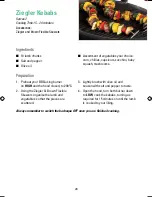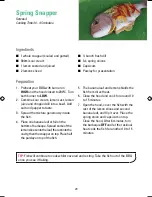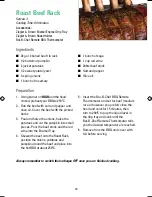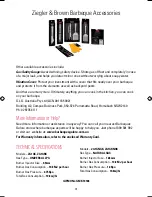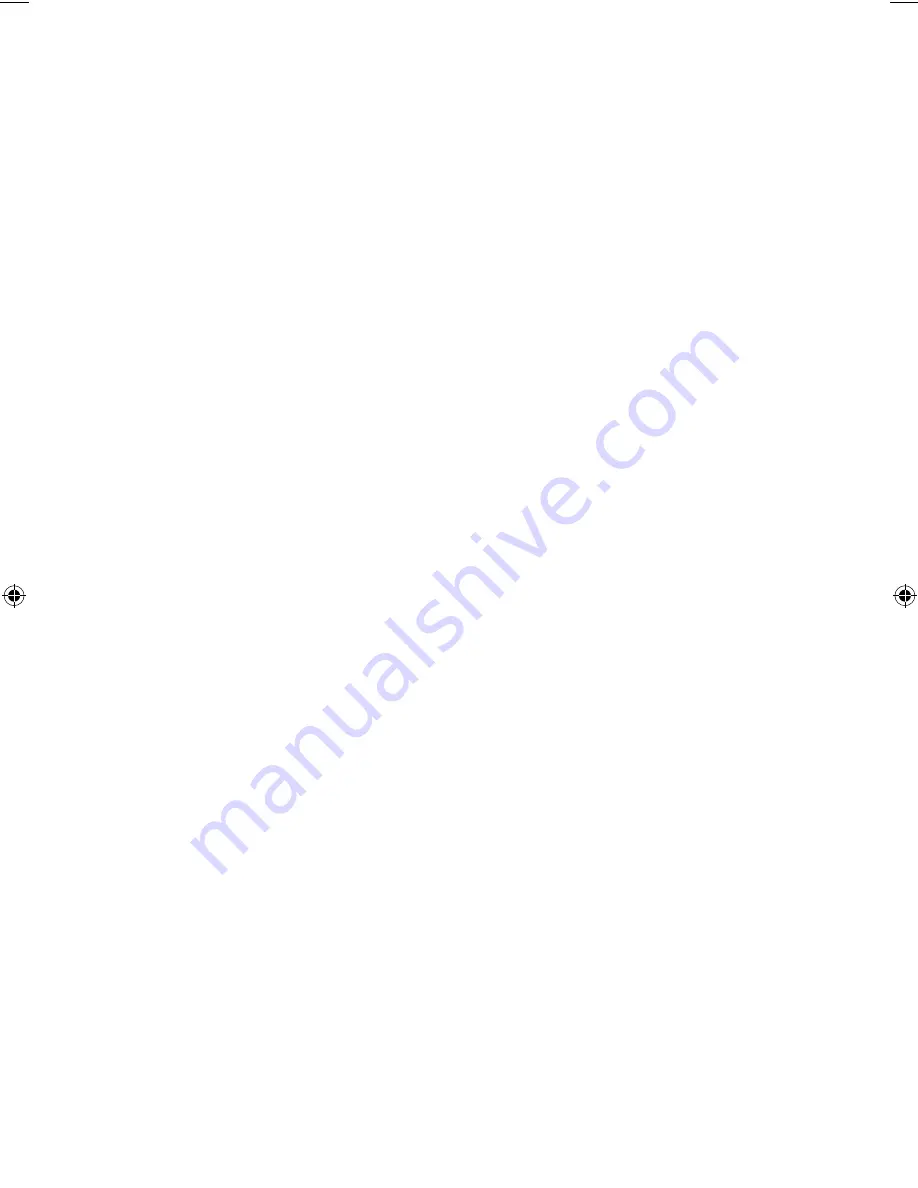
16
burner will usually only need to be on
LOW
and in some rare cases,
OFF
for short periods.
Heat from the lit burner will circulate all through the hood cooking quite evenly. Quite
close attention needs to be paid to the food, and the burners frequently reset to
LOW
or
occaisionally
OFF
as required to prevent overheating.
Don’t be afraid to open the hood often to check progress. You are in full control of the
temperature by turning the burner higher, lower or occasionally
OFF
as required. The
gas burner will respond instantly and powerfully to your control. Most importantly, use
the hood thermometer as a warning guide that the barbeque is too hot. For grilling most
foods, aim to keep the thermometer below around 200ºC. Never let the temperature on
the thermometer reach over 300ºC or the barbeque may overheat and burn your food.
A separate probe thermometer is available as an accessory from all Barbeques Galore
stores. This takes the guesswork out of knowing when your food is cooked.
Always remember to switch the barbeque OFF once you are finished cooking.
(B) Covered Cooking-Indirect Cooking Method
This is when you shield the food from direct heat by using an optional drip pan and roasting
rack or any other method of shielding the food from direct heat such as alumimium foil
under a roasting rack, or a pizza stone. The burner is adjusted from mostly
LOW
to
HIGH
and occasionally
OFF
for short periods to maintain contant lower roasting temperatues.
This method is ideal for thicker cuts of meat, legs of lamb, pork, shoulders of beef, whole
chickens and whole fish.
Moist, hot air rises from the lit burners and circulates around the food, trapping juices and
flavour. Even cakes and breads can be cooked in your barbeque this way. Cooking lower
and slower lets the food cook completely through without burning on the outside, yet
remaining juicy and tender on the inside.
Preheat the barbeque with the burner on
HIGH
and the hood closed for 5 minutes or until
the hood thermometer reads around 200ºC. Best results are achieved by placing your roast
in a rack and that rack in a drip pan. The roast is slighty elevated to allow heat to circulate
all the way around, and water, wine, juices, herbs can be added to the drip pan to help
flavour the roast and make a baste or gravy. Use a large drip pan positioned centrally in
the barbeque. Importantly, once the barbeque is pre-heated and the hood is closed, heat
is trapped around the food, so the burner that is on will mostly only need to be on
LOW
and
sometimes turned
OFF
for short periods. Heat from the lit burner will circulate all through
the hood cooking quite evenly.
TIP: Maintaining a level of liquid (water, juice, wine) in the drip pan keeps the roast moister
and lowers the roasting temperature.
Importantly, use the hood thermometer as a warning guide that the barbeque is too hot. For
roasting most foods, aim to keep the thermometer around 200ºC to avoid burning.
For short periods of browning only, or for 10 minutes to make pork crackling, aim for
around 250ºC.
Содержание ZG1GNGK
Страница 32: ...SPARE PARTS INCLUDING PARTS FOR OPTIONAL EXTRAS 32 ...
Страница 36: ...PORTABLE GRILL THE TAKE ANYWHERE BBQ ...



























